History of the MG Car Club: Part 5
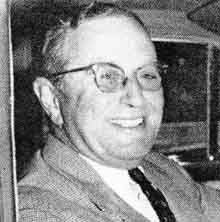
 Part 5 of this multi-part series of the MG Car Club History covers the periods from 1945-1950 and from 1950-1959, the re-birth of the Club following the end of the World War II, and the growth of the international markets. John Thornley and Russell Lowry were the Club’s Honorary Secretaries.
Part 5 of this multi-part series of the MG Car Club History covers the periods from 1945-1950 and from 1950-1959, the re-birth of the Club following the end of the World War II, and the growth of the international markets. John Thornley and Russell Lowry were the Club’s Honorary Secretaries.
POST-WAR REVIVAL 1945-1950
John Thornley
Before considering the post-war re-development of the Club, it may be as well to back track a little on the state of the country, the state of motoring in general and of MG in particular.
When the war finished cars of any kind were not numerous. Those, which were running mostly exhibited pitiful evidence of six years of minimal maintenance. Those, which were in mothballs, were in a condition, which was proportionate to the expertise of the person who had devised the method of preservation. Tyres were a severe problem. Petrol was rationed at a meagre level, a restriction which persisted until the end of the decade.
The MG Car Company, Abingdon, had been heavily involved in war work, employing some 1,600 people on a wide variety of projects, while its car making equipment, such as it was, was stored away in a warehouse in another part of the town and which somebody set on fire in 1943. All the exotic stuff, parts of K3, Q and R, bronze cylinder heads, twin-cam conversions and a host of development materials were in the basement, which of course, filled with water from the fire hoses.
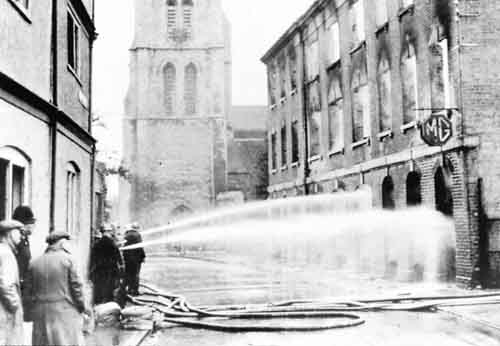
Subsequently, because of the exigencies of war, concrete was poured into the hole rather than that time should be wasted in attempting salvage. lf any wealthy enthusiast would care to buy a block of flats and then bulldoze them, I think I could show him where to start digging!
Miraculously, almost all the tools, which had produced the components of the TB, including the body, survived in various Nuffield organisation plants and it proved to be possible to have the beginnings of TC production in the last days of 1945. (As it was only in the May of that year that the Nazis had collapsed and August when the bombs fell on Hiroshima and Nagasaki, somebody at Abingdon had moved pretty fast).
Even so, the UK market in MGs was not, of itself, such as to generate any great enthusiasm. The nation was living through the period when the catch phrase was “Export or Die”. The number of TCs and Y-types, which appeared in the middle of the following year available to be sold in the UK market was directly related to the number of cars which we could export. The miserly ratio, controlled by our allocation of body sheet, was of the order of one home car per twenty exported. Small wonder we had a real good go at the USA!
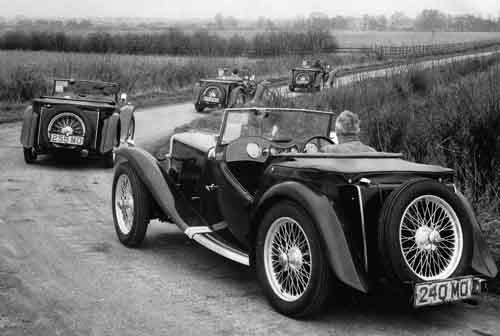
But now, back to the Club. During the war Hector Cox, MG’s peace-time sales manager, had been a caretaker general secretary. Nothing creative was done, of course, and the work consisted mainly of replying to the letters, which those delightful enthusiasts or “nuts”, according to which way you looked at it, wrote to the Club from time to time.
When I rejoined MG late 1945 or early 1946 (so help me, I can remember the salary but not the date!) one of the first things l did was to re-employ MG’s first customer G. S. (Jack) Gardiner as personnel manager and transfer the job of general secretary of the Club to him until such time as we could re-establish some ground organization.
Our pre-war general secretary, Frank ‘Mit’ Harris, had died in the latter days of the war but his widow, Mary, who had always been a bright light in Club affairs concurrently with ‘Mit’ reappeared in the London centre and, in no time at all, there was an active committee, with Stanley Kemball as chairman and with Mary, Robin Mere, Stew Morgan, Walton and myself, among others, as members.
Petrol shortage virtually prohibited vehicular sport, so the forerunner of the present noggin and natter became popular, variety being added by rallies on the Underground! I can’t quite remember how they worked, but Stew Morgan has reminded me of an occasion when a piano appeared on the platform of, we think, Holborn tube station and a sing-song persisted half-way to Ongar.
Gradually, possibly one should say rapidly by today’s standards, things improved, The Company got its teeth into the American market, production improved, cars became available to the home market, enthusiasm re-kindled, the provincial Centres came to life again, new ones erupted, the pre-war membership level was reached and passed.
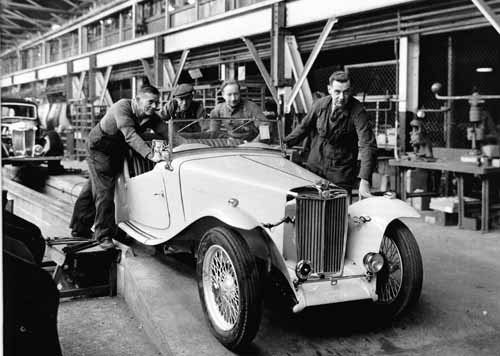
Motorsport began again. The MG Car Company participated officially, in a very limited way, in motor racing. The team of Jacobs, Phillips and Lund ran Ts and Ys at Dundrod and in the production car races at the BRDC Silverstone meetings. The pre-war Abingdon-Abingdon Trial was replaced by a gymkhana held within the perimeter of the Abingdon factory, the Company providing, inter alia, refreshment on a lavish scale such that this event rapidly became a major social occasion. It was at one such that I met Russell Lowry.
Lowry was a retired broker from the Liverpool Cotton Exchange who, from his youth, had pursued motorsport on two, three and four wheels, and was well involved in motor club life in the North of England. In the doldrums period he had started, written, edited and published a magazine called The Motor Club, which had a good circulation in the North, and, what is important from our point of view, was taken by our North-Western Centre, which led to a friendship between Russell and Brian Norris.
The rapid growth of the MG Car Club had produced a workload which was clearly beyond the part-time capacity of an ever busier executive of a thriving company, and it was clear to me that it was of little use shifting the job to some less loaded person within the Company; Company affairs would always be given precedence and the Club would come nowhere. It was necessary to find a secretary outside. But who?
Russell had, for some time, been collating news of MG Car Club affairs for inclusion in the Nuffield Organisation magazine Motoring. In the matter of The Motor Club, Russell had been in touch with Dennis Poore and The Motor Club had become our old friend Autosport, edited by Gregor Grant, with Russell Lowry as Northern Editor and, within its staff George Phillips of immortal MG memory as official photographer, and an enthusiastic Ulster man, F. Wilson McComb, as one of its scribes.
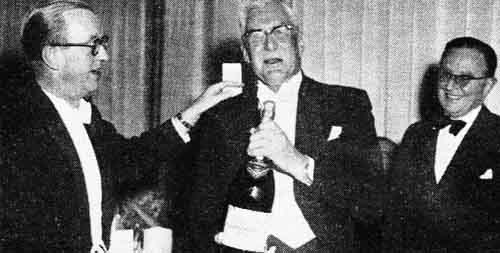
At the BRDC Silverstone of 1950 one buttonholed Russell Lowry, twisting his arm until he agreed to become General Secretary of the MG Car Club. To my shame, he reminds me now that my then estimate of the extent of his labours would be “about one day a week”. With the growth of the Club overseas and its mounting success at home and, be it added, Russell’s ability to push things along, it soon became a full time job and, what is more, we seduced Wilson McComb from Autosport to come to Abingdon and edit Safety Fast!. But the rest of the story is better left to them.
Jack Gardiner was a junior salesman in Morris Garages in 1924 looking forward to his 2lst birthday on March 14. The birthday he knew would bring with it a useful little sum of money so he asked his chief to build him a special bodied Morris. Cecil Kimber agreed and in due course Gardiner took delivery of his Morris Garages Special (FC5333). It was first registered with the Oxford Licence Authorities on March l3 the day before his 2lst birthday. Gardiner could certainly claim to have been Kimber’s first retail customer. Gardiner was later appointed Personnel Manager of MG and served for a year as the Club’s Secretary.
THE FIFTIES 1950-1959
Russell Lowry
When John Thornley made me General Secretary of the MG Car Club in the summer of 1950, with effect January 1 1951, I had already been in touch with Club affairs for quite a while and had been reporting regularly in the New Outlook on Motoring, which was quickly ridiculed into just plain Motoring. We had one page (yes, boy, use both sides) on which to circle the world. So one of my first battles, which was to last nearly 10 years, was for more space. Eventually we won. The result was Safety Fast!.
During these early days it seemed odd to me that the home Centres had practically no contact with each other and indeed, at Council meetings, some of them were barely on speaking terms. Local autonomy and local pride were valuable things in themselves, but a wider canvas was needed. Gradually it got woven. We wheedled some trophies out of the Nuffield Organisation for three regional rallies embodying an element of friendly rivalry and hospitality. The first all-Centre meeting was run at Silverstone in August 1951, and was very popular though organizational difficulties persisted. These days the Cobbans appear to carry Silverstone with all the ease and grace of Atlas doing a wheel change, but among those who really put this meeting on its feet one name, which must always be remembered, is that of Mary Harris. Nor should Wilf Hale and his Midlanders be forgotten. When finances became tight, they swore Silverstone could be run without loss. And they did it. So although in the 1950s new MGs for the British market were few and far between, the Club grew, soon exceeding its pre-war membership, and without losing its local flavours acquired a taller standpoint and a wider view.
Contact with the Home Centres was quick, easy and good, perhaps the more so as, based on Liverpool, l wasn’t too far from any of them. Overseas affairs were much more complex and difficult. It may be hard to realise today, but motorsport at club level was practically unknown in the outside world until it arrived on the shuddering springs of a TC from Abingdon. The seedling took root and grew mightily, but frankly nobody knew quite what to do with it. In the USA, for instance, the sport had no governing body so there were no “competition rules”. Lovely, says you? No sir. You cannot have a sport without rules. Blinding glimpse of the obvious. But that’s how it was, nearly everywhere. So we had to improvise.
A system of recognition, with a rather nice certificate signed by John Thornley and myself was devised. This conferred, as it were, sovereignty within its own area and no poachers would be recognised.
Centres drew up their own rules, based in the main on those of the parent Club, but submitted to them for approval. Ideas varied enormously. I recall one Centre, which specifically banned the carrying of firearms during Club events. Another admitted no women (heaven help them, that country is now in a fever of equal rights!). A third (purported to) forbid alcohol on competition days. One felt rather as, I suppose, a doctor must feel at a birth; a desire and determination to help, some experience and some knowledge enabling one to do so, but a sense of awe coupled with excitement and fear in case things went wrong.
That bit of atmosphere must do duty for a mass of detail. We did what we could we already had, but found more, friends in high places who helped us without expecting the Club to be turned into a publicity stunt, or a private army, either of which we knew would destroy it overnight. People who didn’t see things this way had to be resisted with tooth, claw and maybe the occasional arrow. We had our successes and, goodness knows, our failures but it would seem that we built pretty well.
Present day paper shortages are probably due in part to the enormous exchange of mail with distant parts but there was one Centre, which appointed a secretary especially because he couldn’t write! It was all good clean fun, with a serious purpose. I evolved an unlimited range of signatures with faces pleased, faces angry, faces pleading, coy, hearty and disdainful. And one that cried when it apologised. R was a useful initial.
The soundness of the overseas foundations is surely proved by the superstructure of hospitality, co-operation and friendship which has arisen on them, starting perhaps with the gift, by Long Beach, of the California Cup to the parent Club, then developing into the pattern of co-operation that exists today and about which one reads in Safety Fast!. Long may it continue.
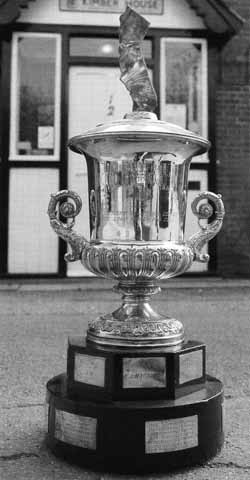
Somewhere, on a sideboard, or in a shed, is a piece of silverware called the General Secretary’s Cup. In 1951 nobody needed to know that it was a purely personal gift from me to the Club. We were not really short of cups. It just seemed a nice idea to me, as a newcomer.
Now, nearly 25 years later, I can say that I’d like it always to be won by a member driving an MG, an MG made at Abingdon, as long ago as reasonably possible.
John Thornley penned this tribute to Russell Lowry. After the end of World War the Home Centres of the Club had come to life again after six years of hibernation. The British had embarked upon their export drive, and MGs had begun to flow in ever-increasing quantities all over the world. MG Car Clubs overseas had begun to erupt spontaneously, and the Club as a whole was an amorphous selection of Centres with a total membership, based on estimate rather than known fact, of some 2000. I had been trying in a very part-time capacity to pick up the various threads and attempt to tie them together. It was at this stage that Russell came upon the scene.
He was a self-confessed ex-cotton broker, with a certain amount of time on his hands. For years he had been interested in motoring and motorsport on two, three and four wheels, and had, prior to my meeting with him at Silverstone, been publishing a magazine called The Motor Club with a wide circulation in the North-West of England. Some of the MG Car Club Home Centres had been in touch with him, and were contributing to this magazine, and there were thoughts of it becoming the official organ of the MG Car Club. In this same August of 1950, however, Autosport started publication, and this incorporated The Motor Club. Russell becoming the Northern Editor of the wider journal, his knowledge of motorsport, his quite brilliant journalism and his manifest liking for the MG Car Club fitted him exactly to the General Secretary’s chair.
From the moment of his taking up the secretarial pen he has harnessed and developed the Club’s affairs as few others could have done. While the MG Car Company has been distributing and exporting its cars, Russell has been distributing and exporting the goodwill of the MG Car Club to the point where there are now some 8000 members throughout the world. Though he has visited many Centres of the Club, this coordination of what may justly be called the MG Brotherhood has been achieved primarily through the medium of correspondence.
During the past 50 years or so many have said that letter writing was a dying art – that the day of ‘belles lettres’ was past. Russell is the shining example of the exception to this. Letters and memoranda from him on a wide variety of Club topics reach me at least every day – thorny problems, requests for guidance, masterly expositions of intricate overseas affairs, items just for information; each one a sheer joy to read. All over the world from Long Beach to Long Island, from Melbourne to Singapore, from Durban to Amsterdam, and from London to Edinburgh, there are those who derive pleasure from these letters of Russell’s, whether he is patting them on the back for some good piece of Club work, outlining some point of policy, or taking them to task for stepping out of line.
A classic scholar derived from a linguistic ability which would be the envy of many, and a knowledge of the not-so-dead languages, is an enormous vocabulary which every so often, it seems, is insufficient, so that he coins, concocts or generates a new word of his own – at once apposite and immediately intelligible – to keep pace with our rapidly developing complex world. This wide choice of words, the deft twists of phrase, the use of the unexpected and the novel – all done, one feels, with a whimsical smile on his face – make the reading of his letters an exciting adventure. The sure knowledge of his subject, the warm understanding of the human problems involved, and the restraint with which, always, he will express his point of view, combine to inspire confidence and establish a lasting bond with those fortunate enough to be on the other end of the line.
Thus it is that countless MG Car Club members in the far corners of the world will, on a visit to England, direct their steps, as a first priority, towards Rose Cottage, Nest Wirral, the Lowry home. There they will meet Meg, his wife almost as much a part of the MG Car Club scene as Russ himself – and be absorbed – that is the word – into the Lowry ambience. They will discover that the man they have known as the writer of “these letters” is even more real in three dimensions, and that Meg, with her knowledge and viva is the fourth.
This is the foundation on which the International MG Car Club has been built. The great majority of our members have not been able to meet the Lowrys – the more is the pity. But perhaps from what I have said they may now be able the better to appreciate that they are members of a unique organisation which, while finding its common ground in the ownership of or interest in a fine car, has developed through the sympathetic understanding and single-mindedness of Russell Lowry.
NAMGAR would like to thank Andy Knott, Editor, Safety Fast! for his kind permission to reproduce these articles.

